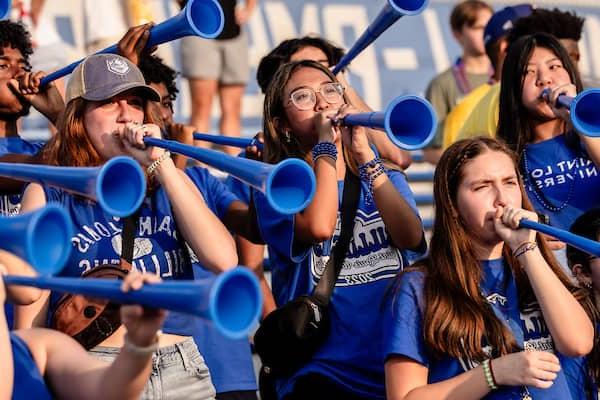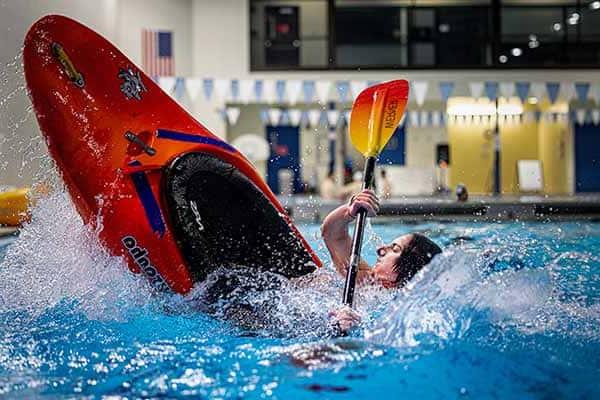Occupational Health Program
Saint Louis University is committed to maintaining a safe and healthy research environment where exposure to biological, chemical, and physical health hazards is minimal.
博彩网址大全 established the Occupational Health Program for Laboratory and Animal Research (OHP) to mitigate risk and ensure compliance with applicable local, state and federal regulations. The principal objective of the OHP is to prevent occupational injury and illness.
The University's vice president for research has approved the University Occupational Health Program for Laboratory and Animal Research Policy (PDF) to ensure that all persons at 博彩网址大全 who are potentially exposed to some level of risk because of their work in or near a research laboratory or animal facility have access to the OHP.
The policy applies to all persons working at the University, including staff, faculty, students, independent contractors, collaborators and other non-University personnel who work in or near a research laboratory or animal facility. All individuals working in or having access to 博彩网址大全 research laboratories or animal research facilities must participate in the OHP. Participation in the OHP is also required under the Select Agent Rule [http://www.ecfr.gov/cgi-bin/retrieveECFR?gp=&SID=8a4be60456973b5ec6bef5dfeaffd49a&r=PART&n=42y1.0.1.6.61] 42 CFR 73 and under the NIH Guidelines for Recombinant DNA by individuals working with Risk Group 3 recombinant materials.
For persons who meet the above criteria, the extent and level of participation in the OHP is based on a risk assessment of the hazards posed by their assigned duties and the applicable setting, including animals and hazardous materials used; exposure intensity, duration, and frequency; susceptibility of personnel; and history of occupational illness and injury in the workplace.
Individuals working within 博彩网址大全 animal facilities who are involved in the direct care of vertebrate animals and their living quarters; those individuals who have direct contact with animals (live or dead), their viable tissues, body fluids, or wastes should also refer to the Institutional Animal Care and Use Committee.
Enrollment
Research Personnel should enroll in the Occupational Health Program for Laboratory and Animal Research (OHP) for the following events:
- new hire into a job position involving laboratory or animal research
- involvement in an Institutional Biosafety Committee protocol
- involvement in an Institutional Animal Care and Use Committee protocol
- transfer to a job position involving laboratory or animal research
- referral by their supervisor
New and existing University research personnel required to participate in the OHP should enroll in the program and take all required training courses as determined by the risk exposure categories of their position.
OHP Enrollment Process:
- Complete the Occupational Health Medical History Questionnaire (PDF) and submit it to the OHP manager. The Medical History Questionnaire is a confidential medical document and should be completed by the participant and sent directly to the OHP manager. It is confidentially maintained in the OHP employee record and is not returned to the participant nor the University. Note: Principal investigators and supervisors should be prepared to assist new personnel with completing the Laboratory Animal Exposure History section because new research personnel may not be fully aware of the species of animals or the frequency of exposure involved in the new position.
- The Medical History Questionnaire is then reviewed by OHP medical staff. OHP medical staff may consult with the Department of Comparative Medicine (CM) and Environmental Health and Safety (EHS) to determine training requirements for lab and chemical safety, biohazards, radiation safety, field safety, driver training, and ergonomics.
- The participant and their supervisor will be notified by EHS (for general laboratory work/settings) or CM (for those engaged in animal care and use) of any specific instructions regarding their continuing participation in the OHP.
- Following the OHP review, OHP medical staff may recommend risk-specific preventive measures, such as immunizations, additional tests, or health monitoring.
- If further requirements are identified during the OHP review, OHP will notify the participant and the supervisor directly. No personal medical information will be included in this notification.
- Once the participant has fulfilled the recommendations or provided justification for exclusion, they may begin work in the applicable research activities.
- The participant and their supervisor must ensure that the Medical History Questionnaire is kept current with respect to any changes in job, job task, animal contact, or exposure to hazardous agents. Significant activity changes may require a new risk assessment and OHP must be contacted.
- Each participant is responsible for submitting an updated Medical History Questionnaire whenever there is a significant change in their health status.
Non-university research personnel and independent contractors must participate in a comparable OHP through their employer. Contact the Occupational Health Program manager at 314-977-7026 or ohp@poscoop.com for guidance on the verification process.
Visitors are exempt from participation in the University's OHP, but those visiting animal facilities and laboratories are subject to University Policy AC-006, which stipulates they must sign the Visitor Assumption of Risk and Release Agreement.
Injury and Illness Reporting Flowchart
Employees and students may reference this flowchart (PDF) in the event of an injury or illness.
Training
Training is essential for adequate preparation to work safely in laboratories and animal facilities. Personnel must attend all mandatory training outlined below and their reporting unit's guidelines per university policies (University Policy RC-006). Managers are encouraged to review the OHP Risk Categories and Training Matrix with their staff.
Register for Courses Listed Below on the EHS Training Page
| Exposure Risk Category | Required Training Course Title |
|---|---|
| Direct Patient Contact | Bloodborne Pathogen Training |
| Research Laboratory Worker | Laboratory Safety and Compliance Training |
| Research Animals and Animal Facilities | Mandatory Animal Use Orientation |
| Occupational Health Program Training | |
| Laboratory Safety and Compliance Training | |
| Support Positions serving research labs and animal facilities (i.e., Housekeeping, Facilities, Public Safety, etc.) | Hazard Awareness Training for Support Staff |
| Bloodborne Pathogens | Bloodborne Pathogen Training |
| Recombinant DNA | Laboratory Safety and Compliance Training |
| Risk Group 2 Biological Agents | Laboratory Safety and Compliance Training |
| Risk Group 3 Biological Agents | Laboratory Safety and Compliance Training |
| Select Agents | Select Agent Awareness |
| BSL-3 Awareness | |
| ABSL-3 Awareness | |
| Toxic Chemicals | Laboratory Safety and Compliance Training |
| Radioactive Materials | Radiation Safety Orientation |
| X-Rays (Machine Produced Radiation) | Radiation Safety Training for X-ray and Fluoroscopy Users |
| Laser Use (Class 3b or 4) | Laser Safety (SkillSoft) |
Personnel are encouraged to seek training opportunities beyond the minimally required courses. Supervisors and reporting units should promote continued training by incorporating occupational health and safety topics in their internal meetings and activities.

















